Sightseeing Spots
Search Results314
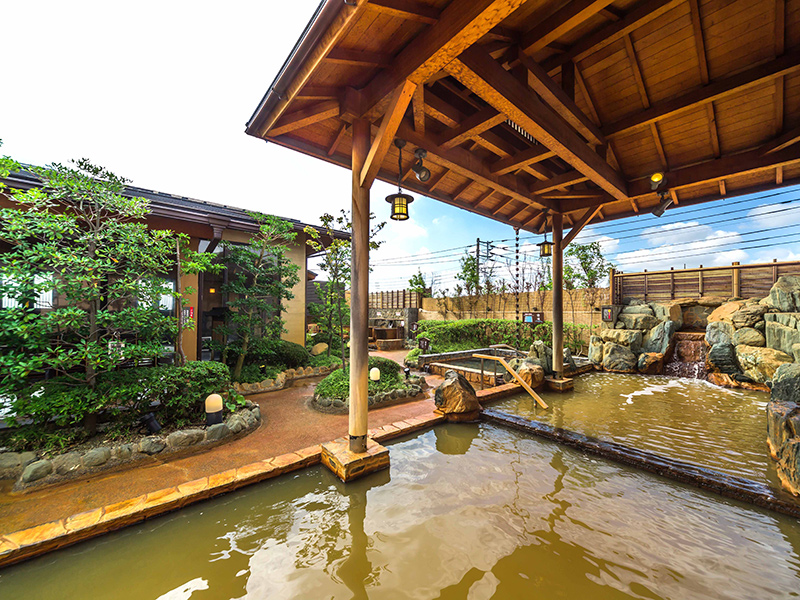
The water at this hot spring, which flows from 1,500 meters underground, scored a maximum score of 5 out of 6 categories in the Japan Natural Hot Spring Examining Authority inspection! With a composition similar to salty seawater, it is also called “Netsu no Yu” (high temperature bath) due to the amount of cold water needed to cool it down. Another appeal is the fact that this hot spring can be enjoyed during the colder months without any added water. The high-concentration carbonated spring, which even garners the attention of the medical industry, can also be enjoyed.
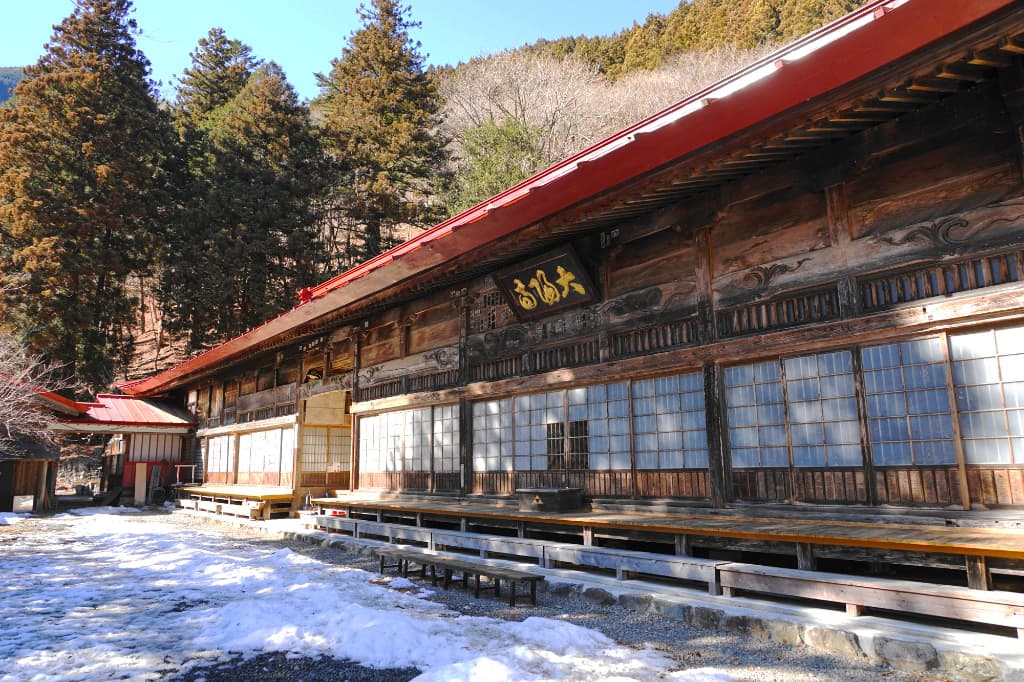
Taiyoji Temple, quietly tucked away in the mountains at an elevation of 800 meters, is said to have been founded about 750 years ago. It is recognized as one of the 13 Buddhas of Chichibu pilgrimage sites. Situated in a secluded valley where even phone signals cannot reach, the temple offers a tranquil space far removed from the clamor of daily life. By sharpening your senses and spending time immersed in the unspoiled beauty of nature, you can find a deeper connection with your inner self. From spring through autumn, visitors can take part in zazen meditation, sutra copying, and temple lodging experiences (reservation required), enjoying a spiritual journey that brings profound healing to both mind and body.
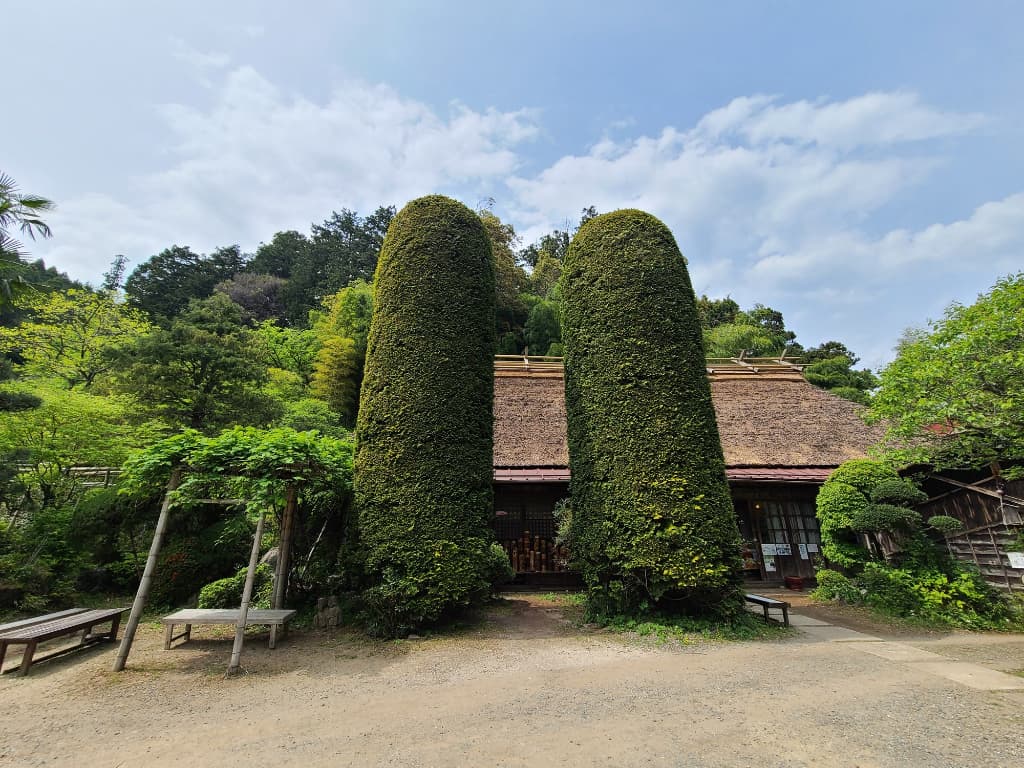
Iozan Yakujuin Hachioji Temple in Hanno City is also known as "Takedera" (Bamboo Temple) because its spacious grounds are densely covered with bamboo groves. It has over a thousand years of history as a training site for mountain worshippers, and offers exceptional shojin ryori (Buddhist vegetarian cuisine). The shojin ryori served here features seasonal mountain vegetables and various medicinal herbs, served in bamboo vessels that are unique to this temple surrounded by bamboo - a refreshing presentation that delights the eye. The dishes are also accompanied by strips of paper inscribed with haiku and seasonal flowers, which embody the beauty and spiritual richness deeply rooted in Japanese culture. Please savor to your heart's content this simple yet refined shojin ryori that brings out the natural character of each ingredient. The main hall enshrines Gozu Tenno, a syncretic deity that emerged from the blending of Shinto and Buddhism, who is worshipped as a protector against illness and misfortune. By the shrine gate at the entrance to the main hall, you'll find a chinowa (sacred rope ring). Make sure to pass through it while praying for the purification of your mind and body.
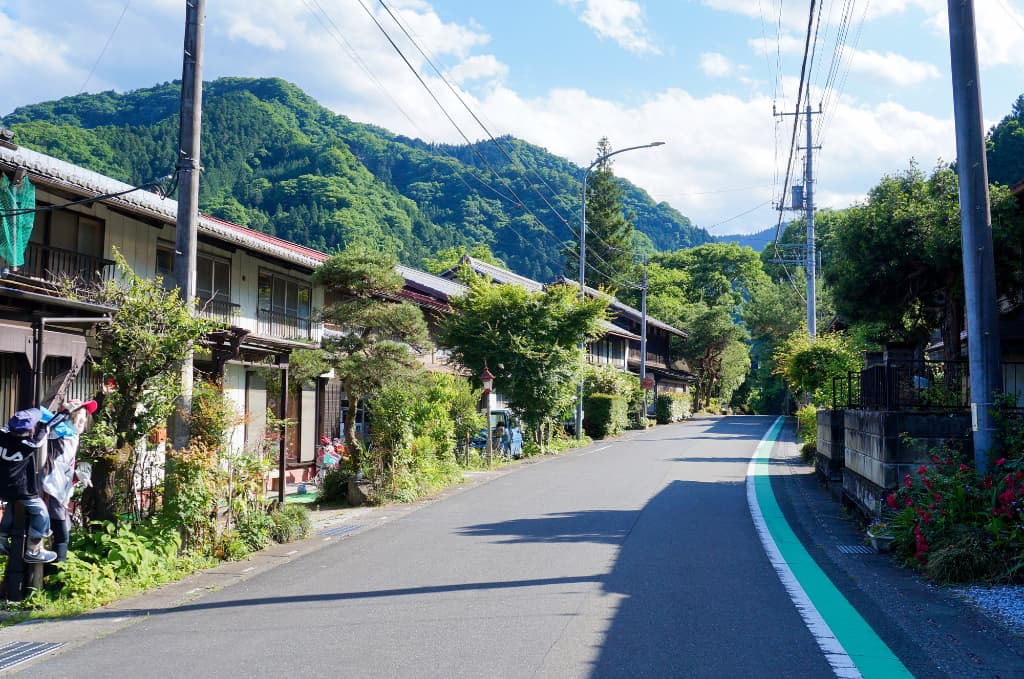
Niekawa-juku was a thriving post town during the Edo period that served as a junction for routes leading to Koshu (Yamanashi Prefecture), Joshu (Gunma Prefecture), and Shinshu (Nagano Prefecture). It flourished due to heavy merchant traffic, with over 20 inns lining the streets. Palanquins carrying pilgrims to Mount Mitsumine also started their journeys from here, adding to the town's bustle. However, when the local railway station opened, fewer people used the old highway, so the town gradually declined. Around 2016, a community revitalization project began to restore the former liveliness by creating a "scarecrow village” (kakashi no sato). More than 60 unique and charming scarecrows have been placed throughout, delighting visitors. These scarecrows feature varied appearances with meticulously crafted clothing and accessories that are so lifelike, they seem ready to spring into action, bringing vibrancy back to the town. You can reach Mitsumineguchi Station, where Niekawa-juku is located, by taking the SL Paleo Express. In 2020, SL Tenshadai Park opened at Mitsumineguchi Station, where visitors can observe coal handling operations such as coal trimming and watch a turntable rotate steam locomotives up close. Kakashi: Dolls or figures placed in fields to prevent birds and other animals from damaging crops. *The figures sitting in the image are kakashi.
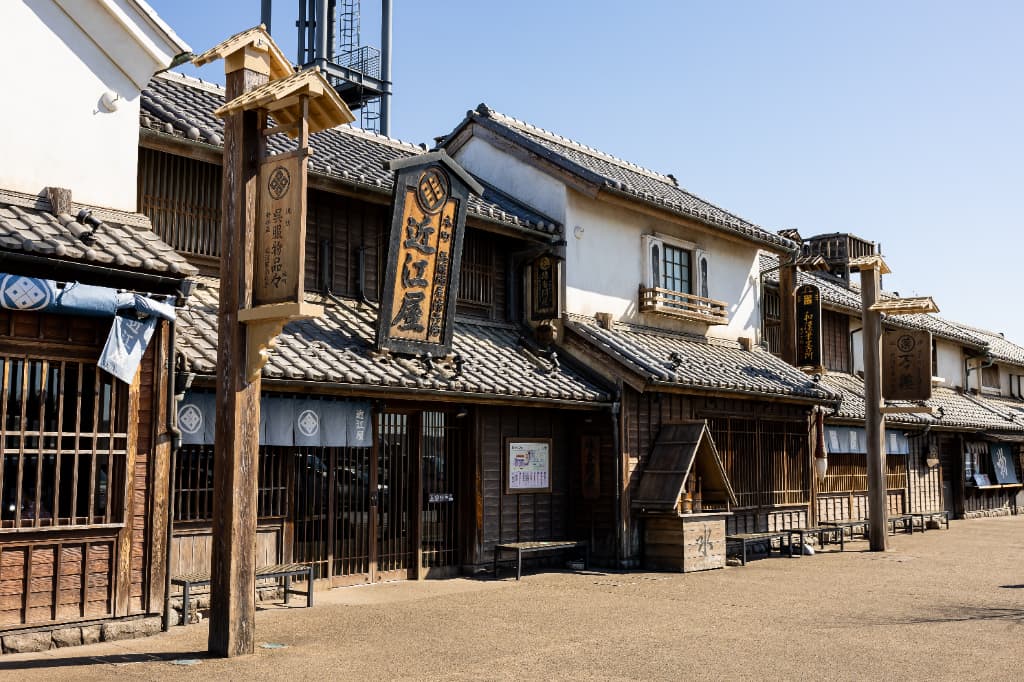
Located in the Hanyu Parking Area on the Tohoku Expressway (Tokyo-bound), Onihei Edodokoro is a facility that recreates the world of the historical novel series "Onihei Hankacho." Visitors can experience the streetscapes and culture of the Edo period, as well as savor the authentic flavors of Edo that were beloved by Shotaro Ikenami, the author of "Onihei Hankacho" and a renowned gourmet. The food court features long-established shops and famous restaurants that preserve traditional Edo flavors to this day. Establishments such as "Gotetsu," the game fowl hot pot restaurant that appears in "Onihei Hankacho," have been faithfully recreated, allowing visitors to feel as though they've stepped into the world of the stories. The souvenir shop stocks a wide variety of traditional products from established stores, highway souvenirs, and numerous original Onihei Edodokoro items that can only be found here.
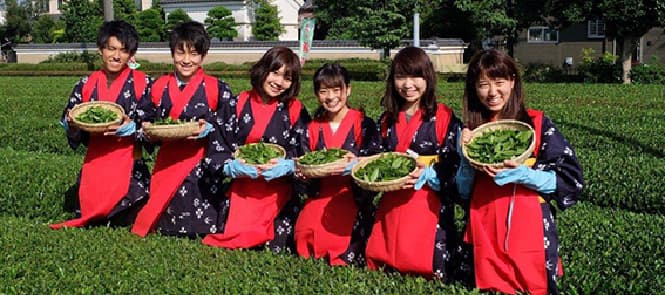
As celebrated in a traditional Sayama tea picking song: "Shizuoka for color, Uji for aroma, and Sayama for flavor." Sayama tea ranks among Japan's top three teas, alongside Shizuoka tea and Uji tea. At Miyanoen, visitors can enjoy hands-on experiences that bring them closer to Sayama tea. Their tea leaf-picking experience includes wearing traditional red aprons (available for rent), tasting the tea you've freshly picked, sampling unique tea leaf tempura, and creating matcha art - all wonderful ways to immerse yourself in both Sayama tea and Japanese tea culture.
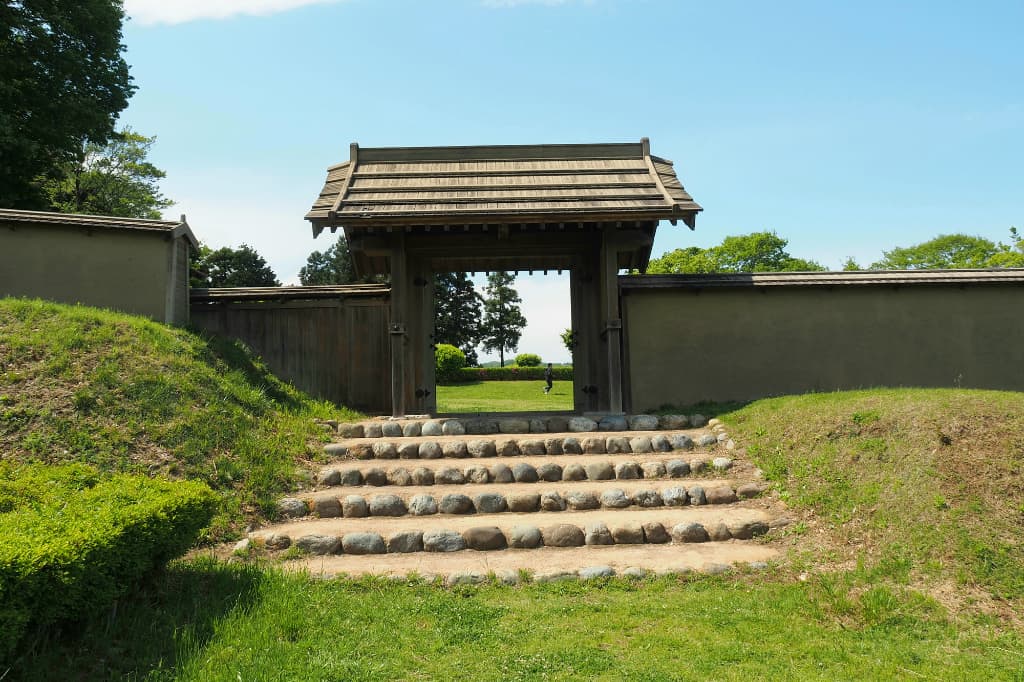
Hachigata Castle is a prime example of Sengoku-period (late 15th-16th centuries) fortresses in the Kanto region and is recognized among Japan’s top 100 castles. It is said to have been built in 1476 (Bunmei 8) by Nagao Kageharu, the chief retainer of the Yamauchi Uesugi clan, who served as the regional governors of the Kanto region. Later, Ujikuni, son of warlord Hojo Ujiyasu from Odawara, expanded and fortified it to its present scale. During Toyotomi Hideyoshi's siege of Odawara, the castle was besieged by forces led by Maeda Toshiie and Uesugi Kagekatsu. After defending for over a month, it was surrendered on the condition that the lives of the garrison would be spared, and the castle was subsequently abandoned. The main bailey and other enclosures, surrounded by earthen ramparts and deep moats, still exist today. You can learn more about Hachigata Castle's history at the Hachigata Castle History Museum, located within Hachigata Castle Park. In addition to restored models and videos, the museum offers a virtual experience program where you can explore the castle grounds recreated using CG, giving you a sense of how it appeared in its heyday. Furthermore, by downloading the app "Yotte GO! Yorii Town" (風雲YotteGO!謎解き寄居町), you can view CG images throughout the park and enjoy interactive games.
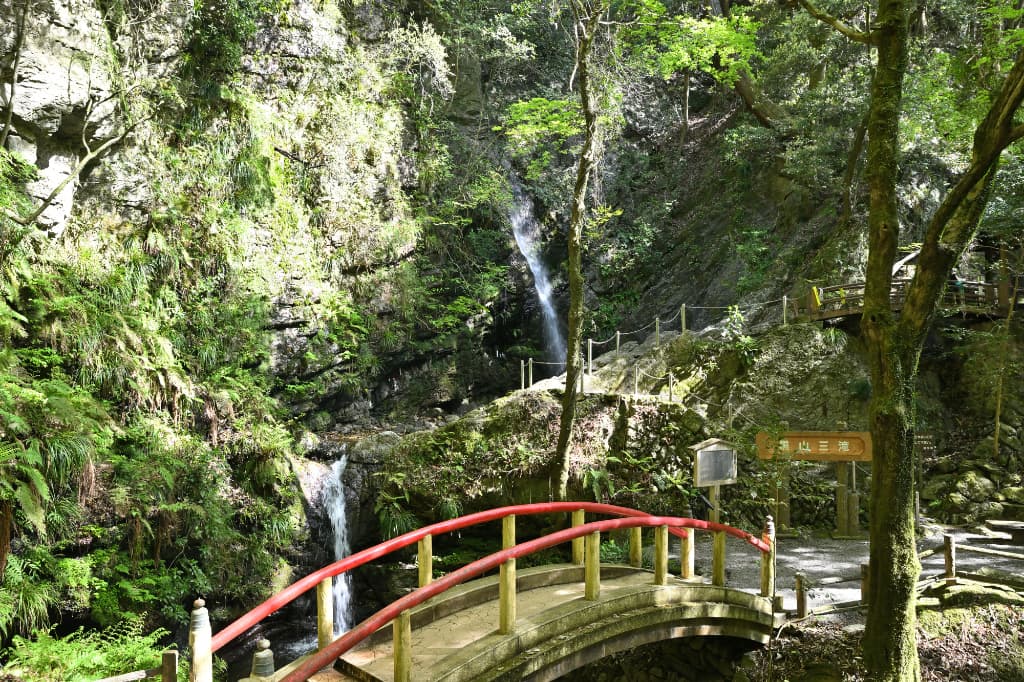
Within Ogose Town in Iruma sits a scenic area where you can find the Three Waterfalls of Kuroyama (Kuroyama Santaki): Odaki, Medaki, and Tengu Taki. It has been selected as one of Japan's top 100 tourist destinations. During summer, the pure mist from the cascading waters and the rich greenery that surrounds the area provide a coolness that helps you forget the hustle and bustle of city life. It's an ideal summer retreat where you can heal from the fatigue of the everyday and refresh both mind and body. The area has also long been revered as a powerful sacred site for “shugendo” mountain asceticism practitioners. Many come here to experience the energy of nature with their whole being and to pray for better fortune. With beautiful fresh greenery in spring and stunning autumn colors, the Kuroyama Santaki area shows different faces throughout the seasons. Please consider visiting this remarkable place at least once!
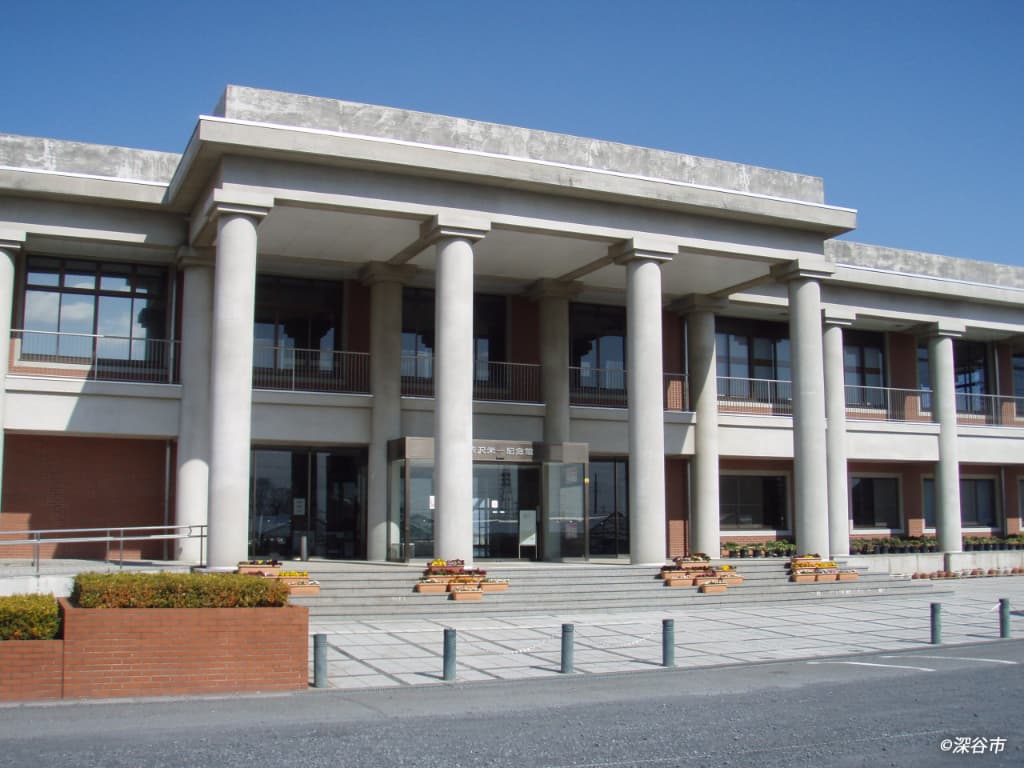
The Shibusawa Memorial Museum in Fukaya City showcases the achievements of Shibusawa Eiichi, a businessman from the late 19th to early 20th century who contributed to the development of Japan's modern economy. The museum's archive room features an extensive collection of materials that preserve his great legacy, including his handwritten works and photographs. The main attraction is a lecture delivered by the Shibusawa Eiichi android in the lecture room. By attending this lecture given by a remarkably lifelike android, visitors can learn about Shibusawa Eiichi's philosophy and ideas. *Lectures require advance reservations due to limited capacity. Those wishing to visit should check the schedule on the official website and make reservations well in advance.
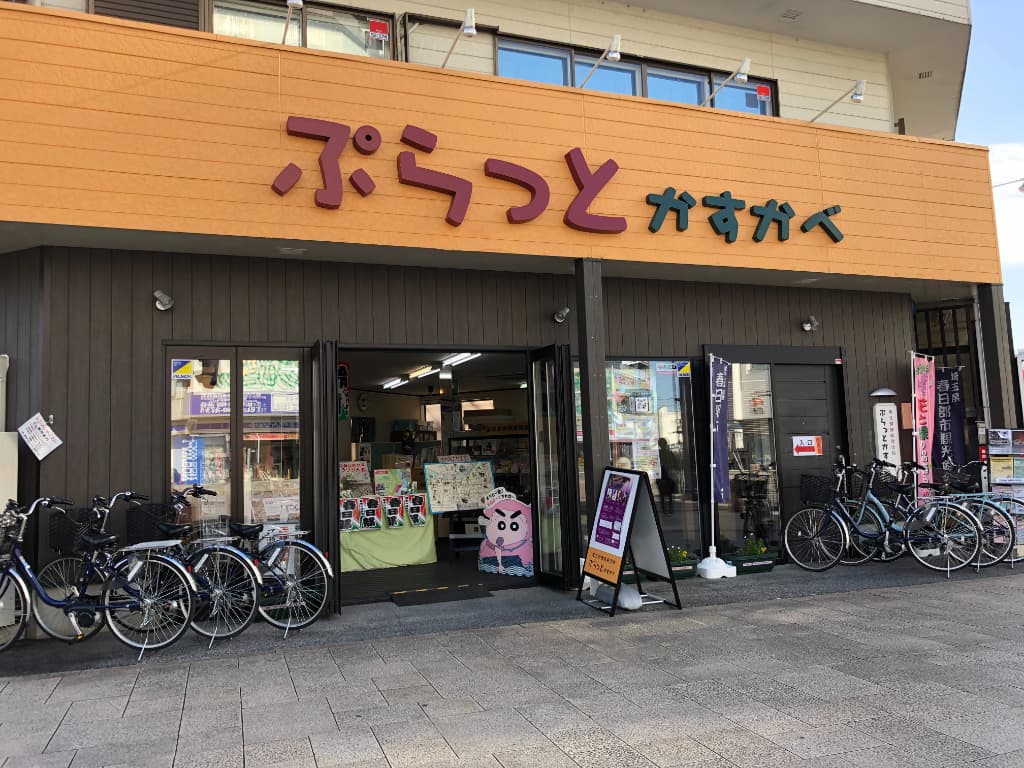
Located at the east exit of Kasukabe Station, Kasukabe Information Center "Puratto Kasukabe" is a facility where you can get information about all of Kasukabe City's attractions, from specialty products to sightseeing spots and events. It is a popular relaxation spot that anyone can casually drop by. Apart from introducing information on local tourism spots and specialties, they sell foods certified under the city’s "Food Selection" program. In addition to having display panels on Crayon Shin-chan - the anime character that represents Kasukabe City - which include reproductions of the original manga artwork, you can also get a commemorative visitor stamp. The facility also provides bicycle rentals, making it convenient as a base for Kasukabe sightseeing. Please feel free to stop by!
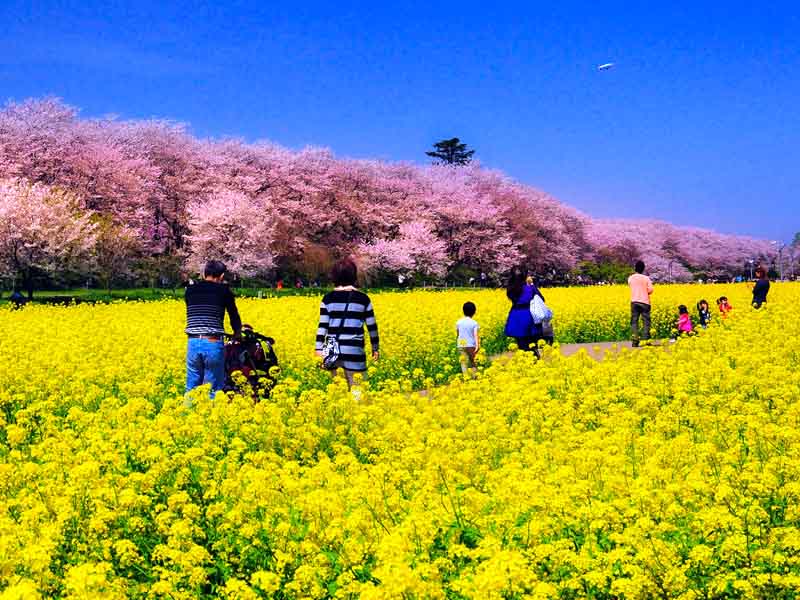
Gongendo Park is a hot spot for cherry blossoms, thanks to a 1 km stretch of 1,000 Yoshino cherry trees contrasting with beautiful yellow rapeseed flowers, and the park is filled with revelers every year. In addition, in June you can enjoy stunning hydrangea, in September the vivid red spider lily, and in January the charming white daffodils. A wonderful spot to visit, regardless of the season!
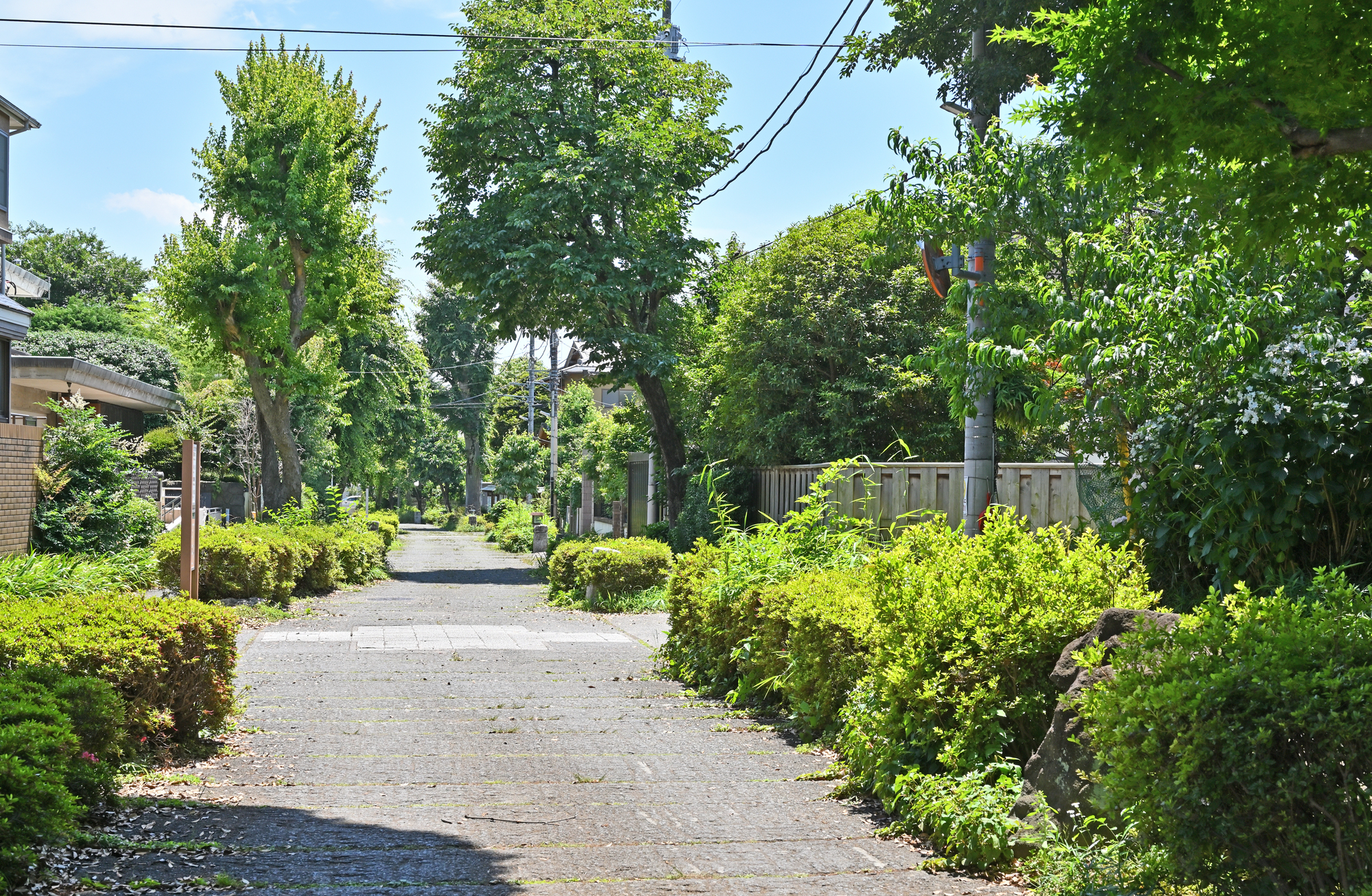
Omiya Bonsai Village was founded in 1925 by bonsai gardeners who moved from Tokyo after the Great Kanto Earthquake. They chose Saitama for its clean air, fresh water, and open space, perfect for growing bonsai. Today, the village remains a hub for bonsai culture in Japan, with six bonsai shops (bonsai-en), each with its own style and story. Right next to the village is the Omiya Bonsai Art Museum, the first public museum in the world dedicated entirely to bonsai. It's a great place to start your visit, offering helpful background, beautiful displays, and a deeper understanding of the art form. The village is just a short walk from Omiya-koen or Toro Station. While it’s open all year, spring and autumn are the best times to go, when the trees and gardens are especially beautiful.
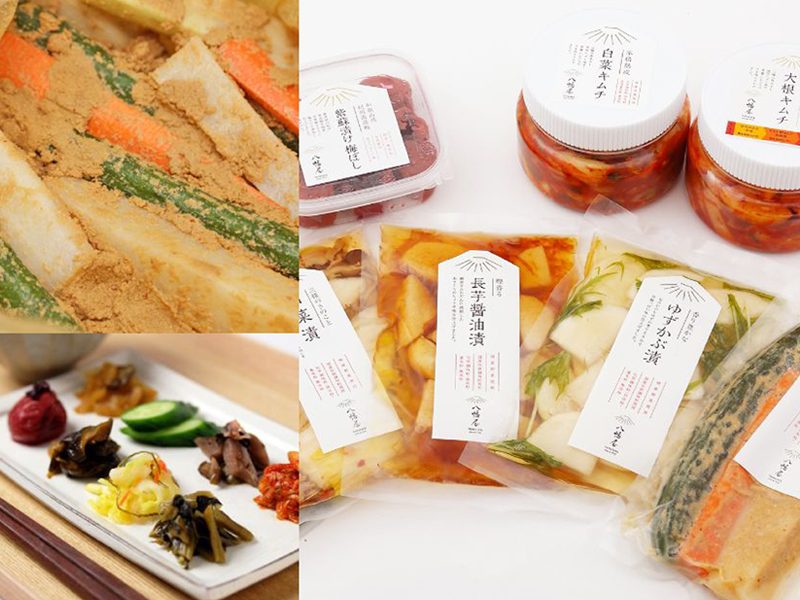
A fermentation theme park run by Pickles Corporation, a tsukemono (Japanese pickles) maker. There are select shops for fermented foods, cafes, restaurants, and workshops available. You can eat dishes made with koji (rice with added fermentation culture) and lactic acid bacteria, and buy pickles and fermented foods carefully selected from all over the country.

The Laview limited express train offers a luxurious and comfortable travel experience between Ikebukuro (Tokyo) and Chichibu. With its futuristic exterior design and stylish, spacious interior, Laview allows you to relax and enjoy the beautiful natural landscapes of Saitama while traveling. This convenient train provides easy access to top destinations in Saitama, including Chichibu, Nagatoro, Hanno, and Tokorozawa. Whether you’re planning a day trip from Tokyo or a longer Saitama getaway, the Laview makes it effortless to explore Saitama’s scenic spots, outdoor adventures, and cultural attractions in comfort and style.
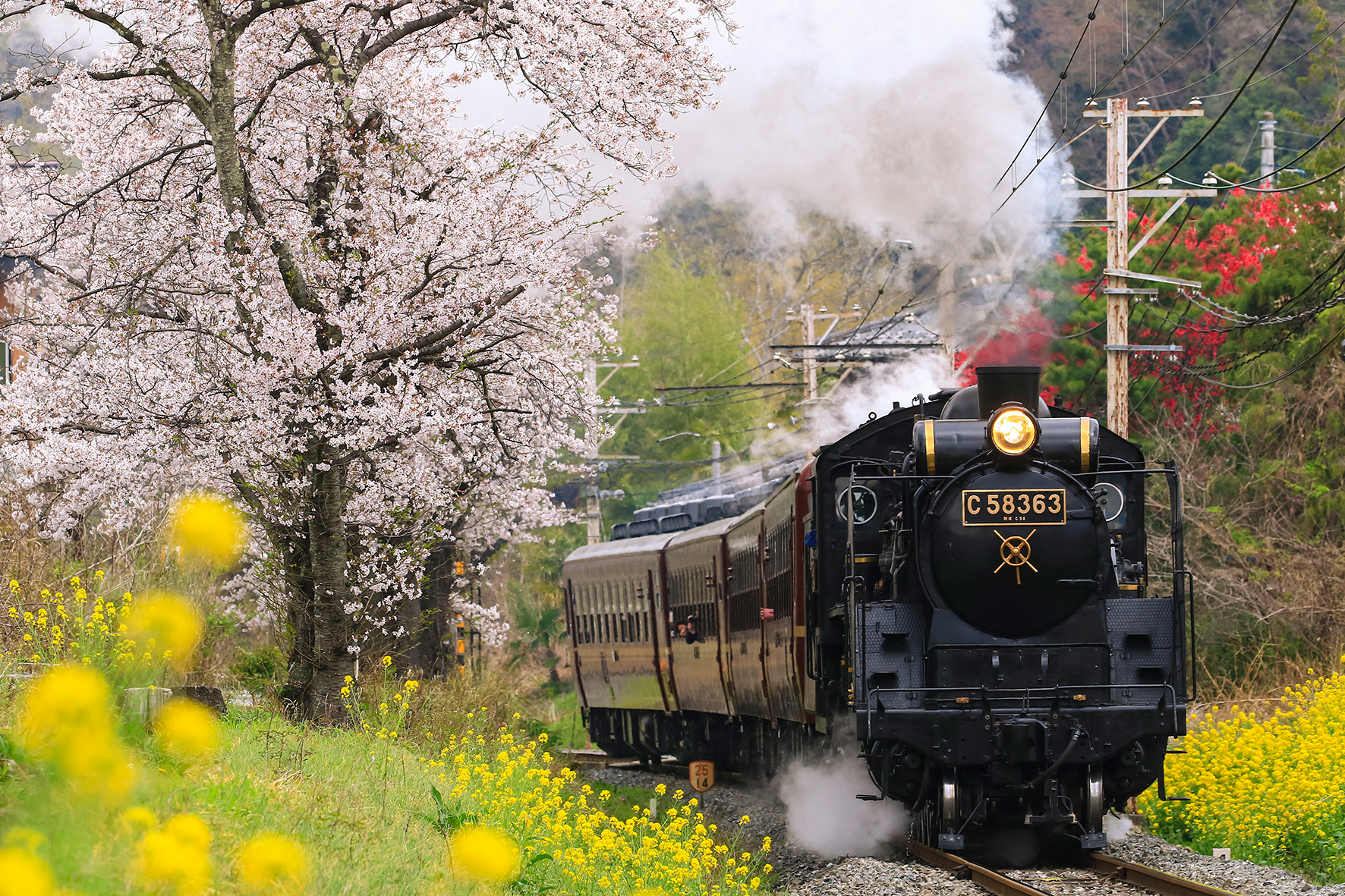
The SL Paleo Express is a historic steam locomotive that runs through the scenic Chichibu region of Saitama, just a short trip from Tokyo. Operating between Kumagaya and Mitsumineguchi, this nostalgic train ride takes passengers past mountains, rivers, and picturesque countryside landscapes. Along the way, travelers can enjoy the breathtaking views of Nagatoro, famous for its dramatic river and rock formations. Ideal for train enthusiasts, families, and anyone seeking a unique day trip from Tokyo, the SL Paleo Express is one of the top attractions in Saitama and a must-see for visitors exploring the region.
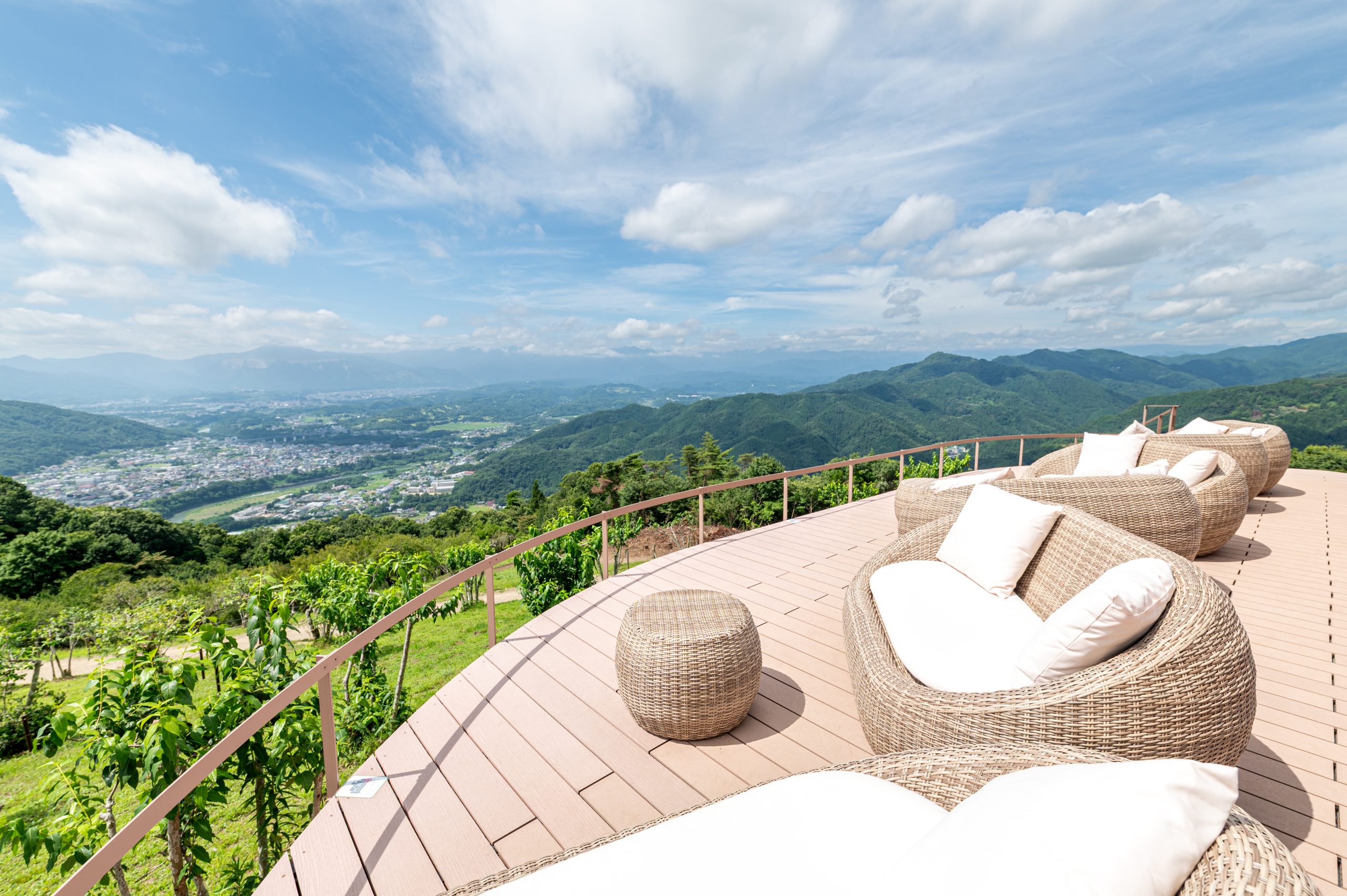
Susabino Terrace offers stunning mountain views from the summit of Mt. Hodosan in Nagatoro, Chichibu. It’s a great spot for a day trip from Tokyo or exploring Saitama’s hidden gems. Enjoy drinks or light snacks while relaxing at photo spots, a view counter, benches, and a lounge area. Perfect for couples, families, and nature lovers. The terrace is surrounded by wintersweet trees, and from mid-January to late February you can enjoy panoramic views of yellow blossoms and their sweet fragrance. For a peaceful, scenic escape near Tokyo, Susabino Terrace is a must-visit!
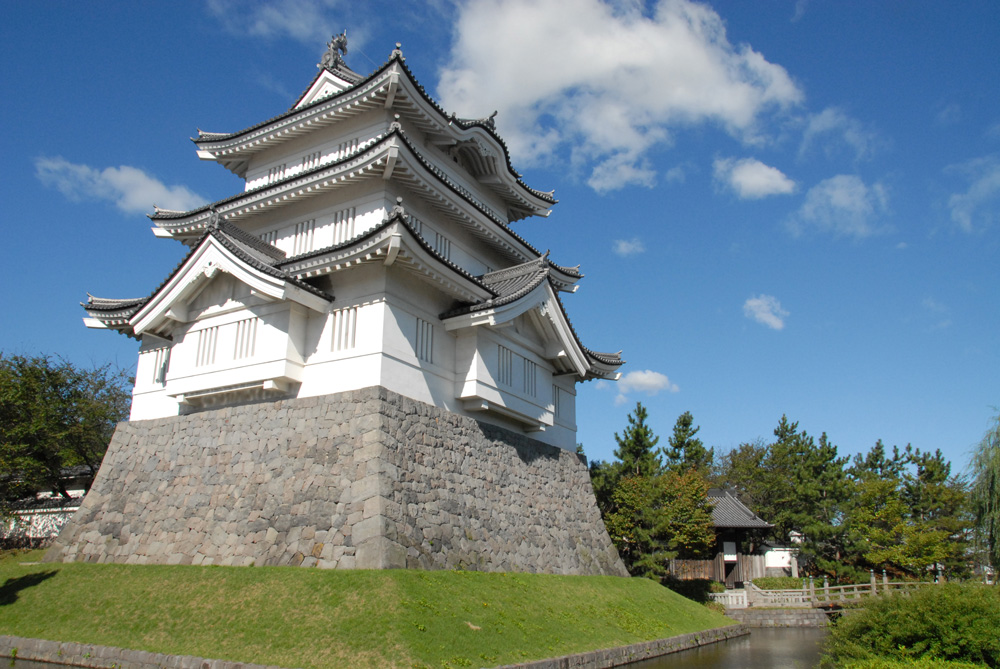
Oshi Castle is one of seven famous castles in the Kanto region, built during the civilization years of the Muromachi period. It is known as an “Uki-jō (Floating Castle),” as it is said to have endured the flooding of Ishida Mitsunari during Toyotomi Hideyoshi’s suppression of Kanto. The story of this castle was the model for the movie “Nobō-no-Shiro (The Floating Castle).” It is currently listed as one of Japan's Top 100 castles. The “Oshijyō Gosankaiyagura (Oshi Castle Three Story Turret)” was torn down during the Meiji period and rebuilt in 1988, with the inside turned into an exhibition room of the local museum, and a view of the entire city can be seen from the top floor.
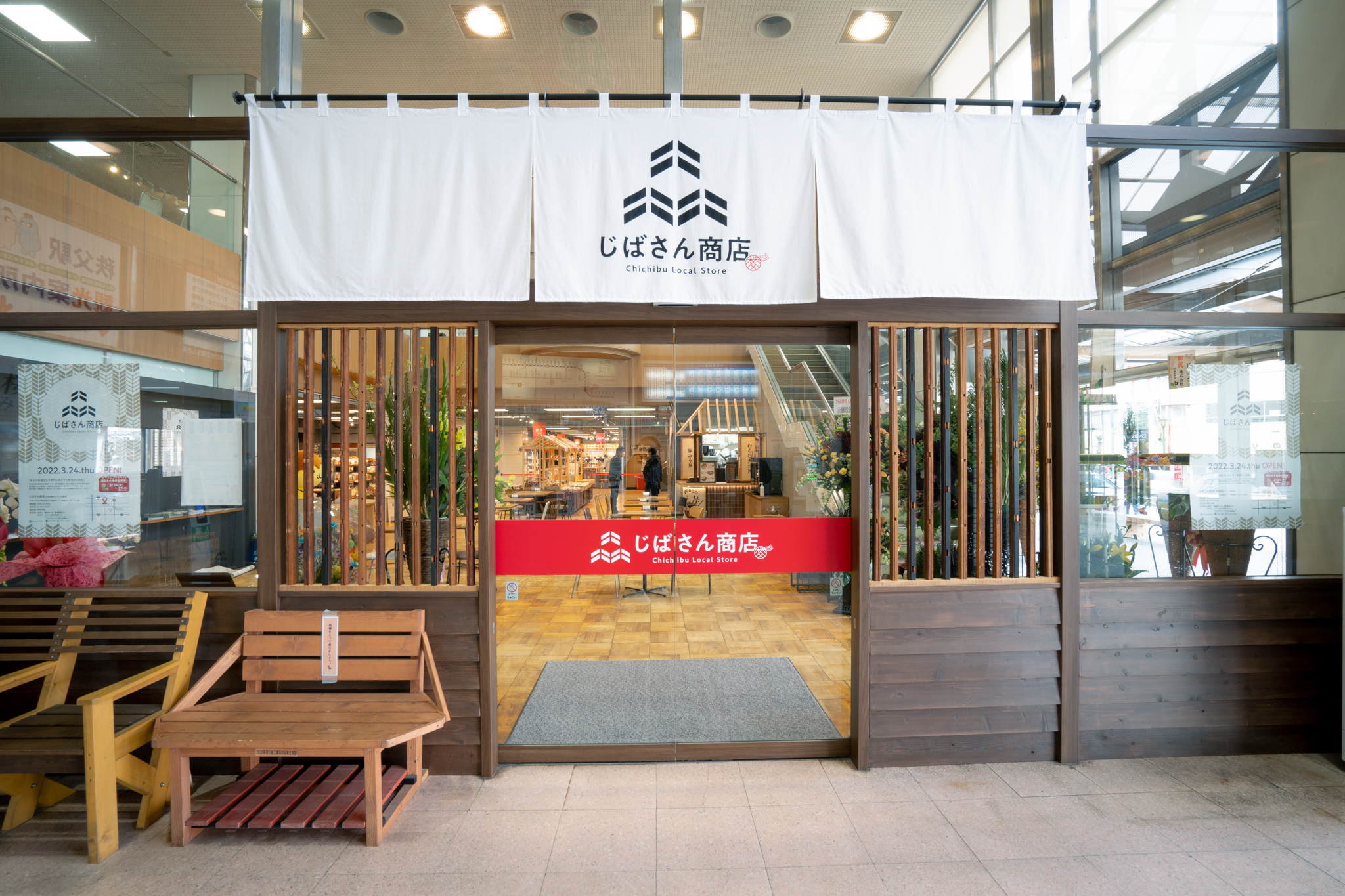
If you're on the search for Chichibu souvenirs, look no further! At Jibasan Shoten they have a wide range of popular souvenirs from the Chichibu area, including vegetables from local farmers, unique area gems, and many goods including the local mascot character, Potekuma-kun. You can also find products to get a taste of daily life in Chichibu, or even find the perfect gift for your loved ones. We look forward to your patronage!
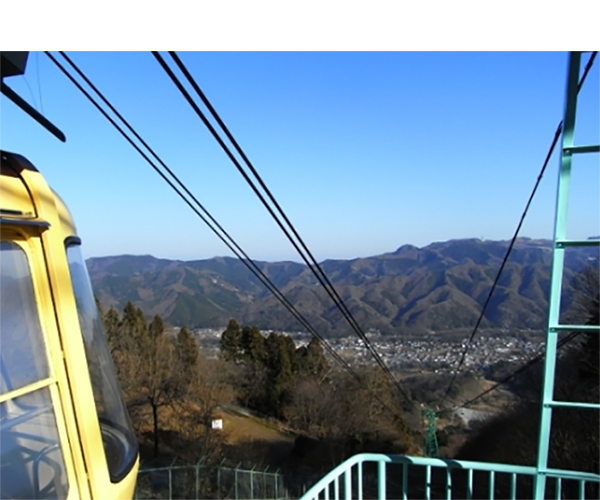
This ropeway was installed on Mt. Hodōsan at an altitude of 497 meters, connecting the 832 meter distance from Sanroku Station to Sanchō Station in 5 minutes. The two gondolas go back and forth between Sanroku and Sanchō Stations operating under a four-line crossing system. The gondolas’ names, “The Bambi” and “The Monkey I,” both originate from the popular Japanese macaque and deer that inhabit the small zoo on Mt. Hodōsan.
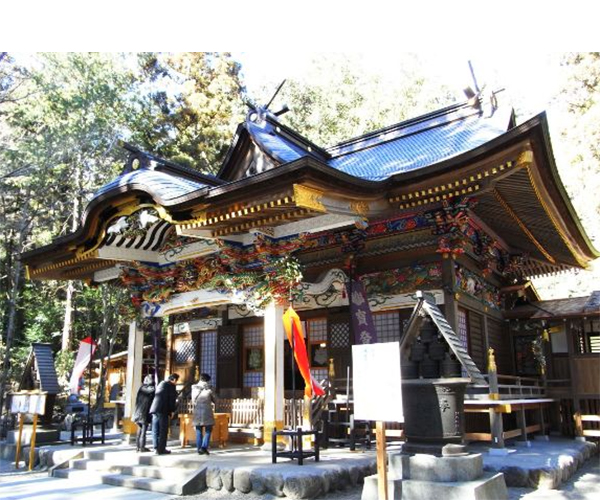
This shrine was said to be founded by Yamato Takeru, the 12th Emperor of Japan, around 2,000 years ago. The current main building of the shrine is Shinto-style architecture, where the main hall and worship hall share one roof and are connected by an intermediate passageway. The main shrine, hall of offerings, and hall of worship were rebuilt during the end of the Edo period to the early Meiji period. The shrine is said to protect from fires, theft, and pain. Not only do many worshipers come from the local area, but also from throughout Kanto region, with more than one million annual visitors.
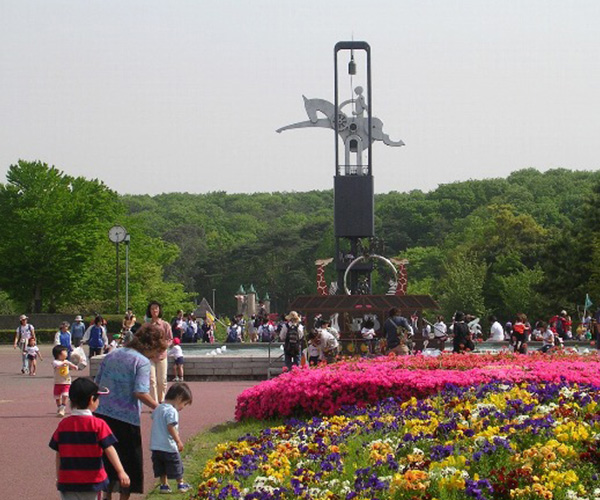
Sprawling out over the Hiki Hills, this 46-hectare site is home to popular animals such as giraffes, red pandas, and koalas, as well as an ecological park dedicated to Humboldt penguins, Penguin Hills. Also adjacent to the park are a walking trail and cross-country course. The zoo is the only place in Japan where visitors can see the small rodent, gundi, at the "Eco Houchoo" (Eco-friendly mouse house), the rabbit-like yellow-spotted rock hyrax, the world's smallest deer, pudu, and the quokka, which joined the zoo to commemorate its 40th anniversary. The Capybara Hot Springs, a winter tradition, is also very popular.
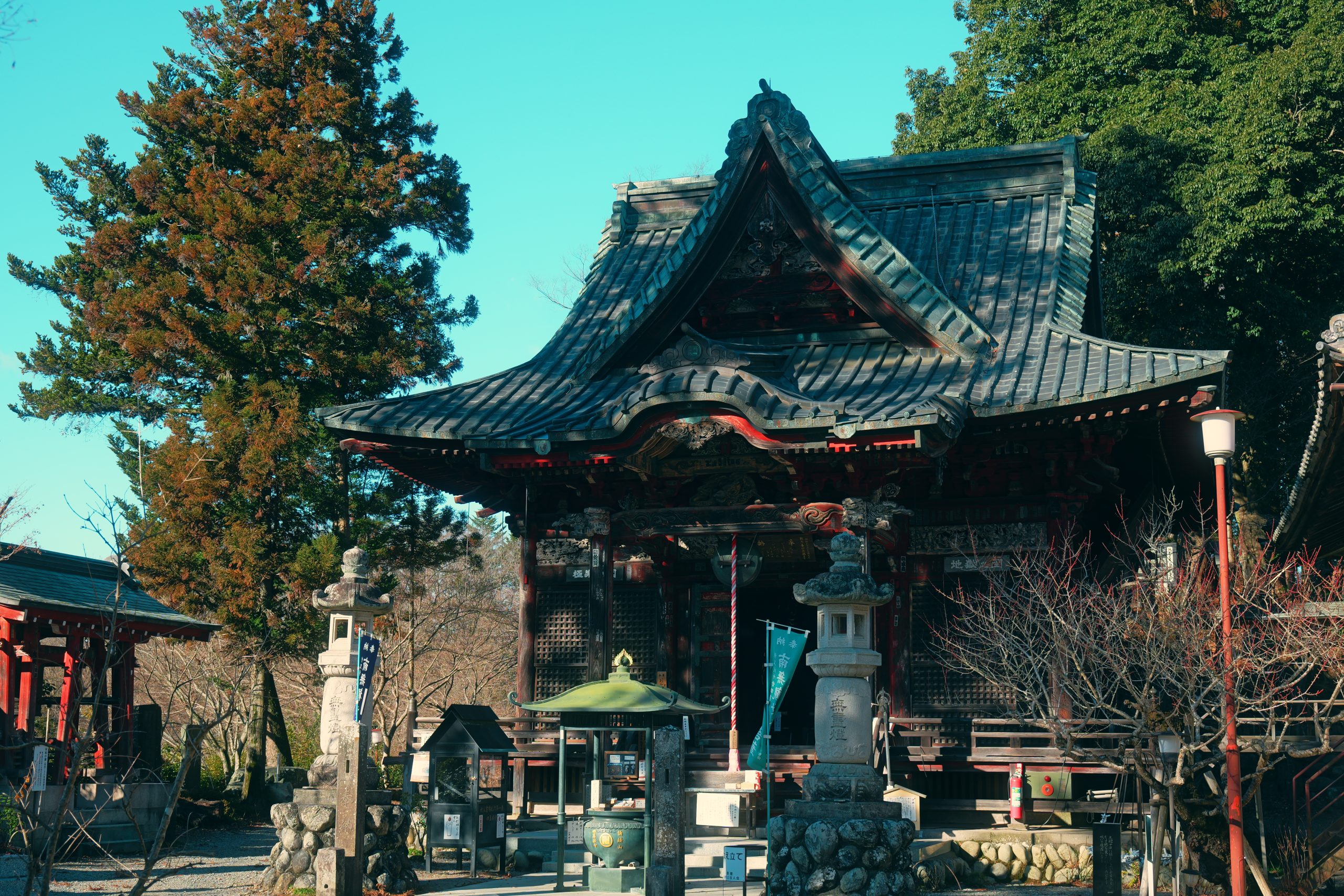
Shimabu-ji Temple is the No.1 temple of Chichibu Fudasho (34 sacred places of the Kannon) . The main hall (Kannon-do), built in 1697, has been designated as a tangible cultural property of Saitama Prefecture. The carvings on the front balustrade, 'Jigoku no zu' and 'Gokuraku no zu', are magnificent. The main hall enshrines the deity Otasuke Kannon, who is said to help people out of their troubles and suffering. The Great Ceremony held every year on 24 August in the Shishoku Shokudo to the right of the main hall is also famous. It is a very lively gathering of monks from Chichibu, regardless of denomination. This event is famous as one of the three major offerings in the Kanto region, along with the Gyokusoin no Daisegaki in Saitama City and the Dojo Shigaki in Eifukuji in Sugito-cho, Kitakatsushika-gun.
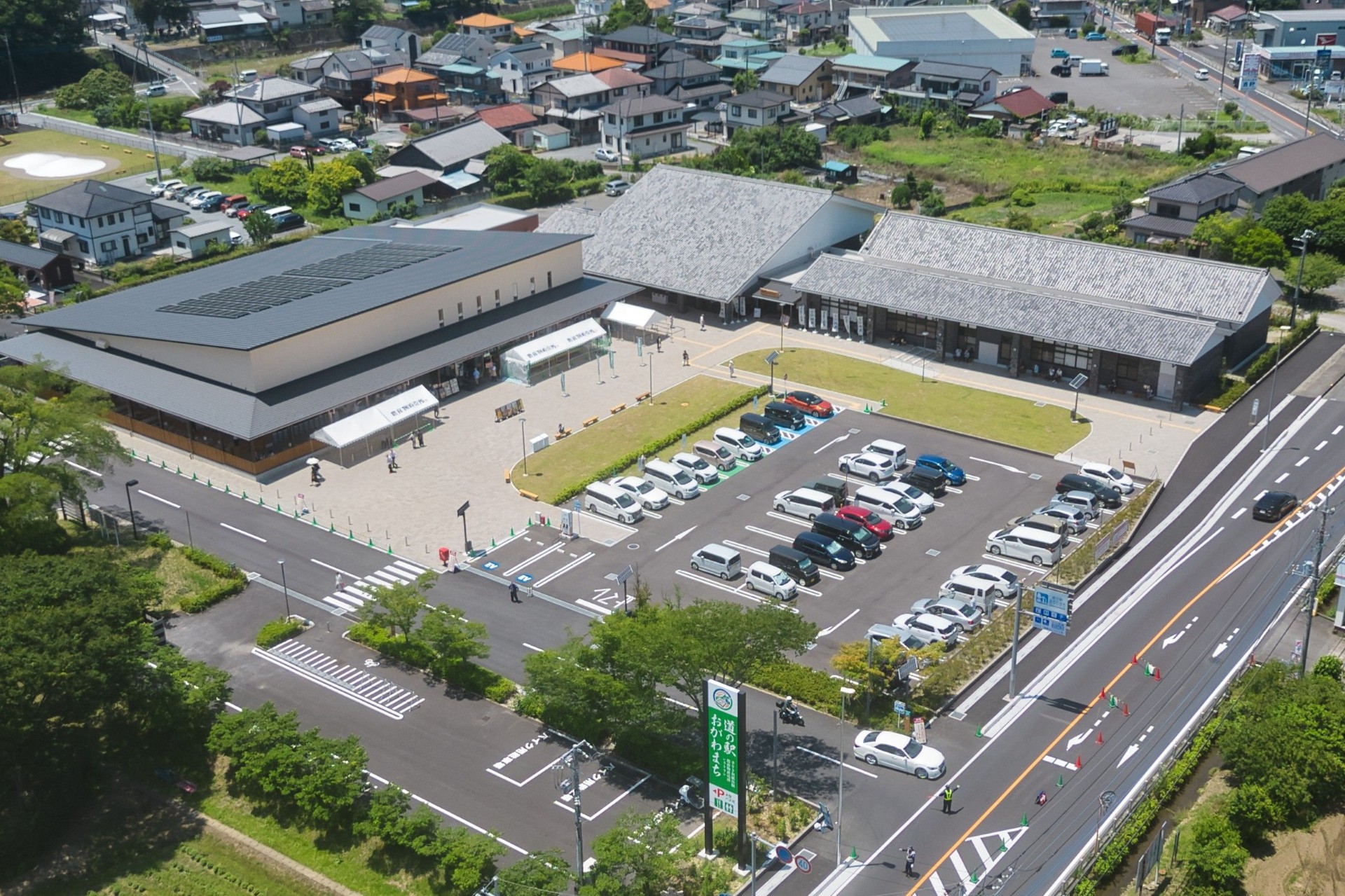
Reopening May 30, 2025: Roadside Station Ogawamachi is being renewed as a vibrant hub for cultural exchange and regional revitalization, centered around the theme of “Handmade Washi Paper and Organic Lifestyle.”
[Traditional Craft Area]
Try your hand at traditional papermaking, uchiwa fan crafting, and washi lantern making. Please visit our Traditional Crafts Facility page for more details. There’s also a washi exhibition room and a shop where you can purchase washi products.
[Local Industry Promotion Area]
Features a gift shop with local specialty products, a farmers' market selling fresh local produce, a cafeteria, and places to enjoy fast food and sweets.
[Community Plaza]
Includes a fun playground for children.
You can also rent electric bicycles for touring the surrounding countryside.
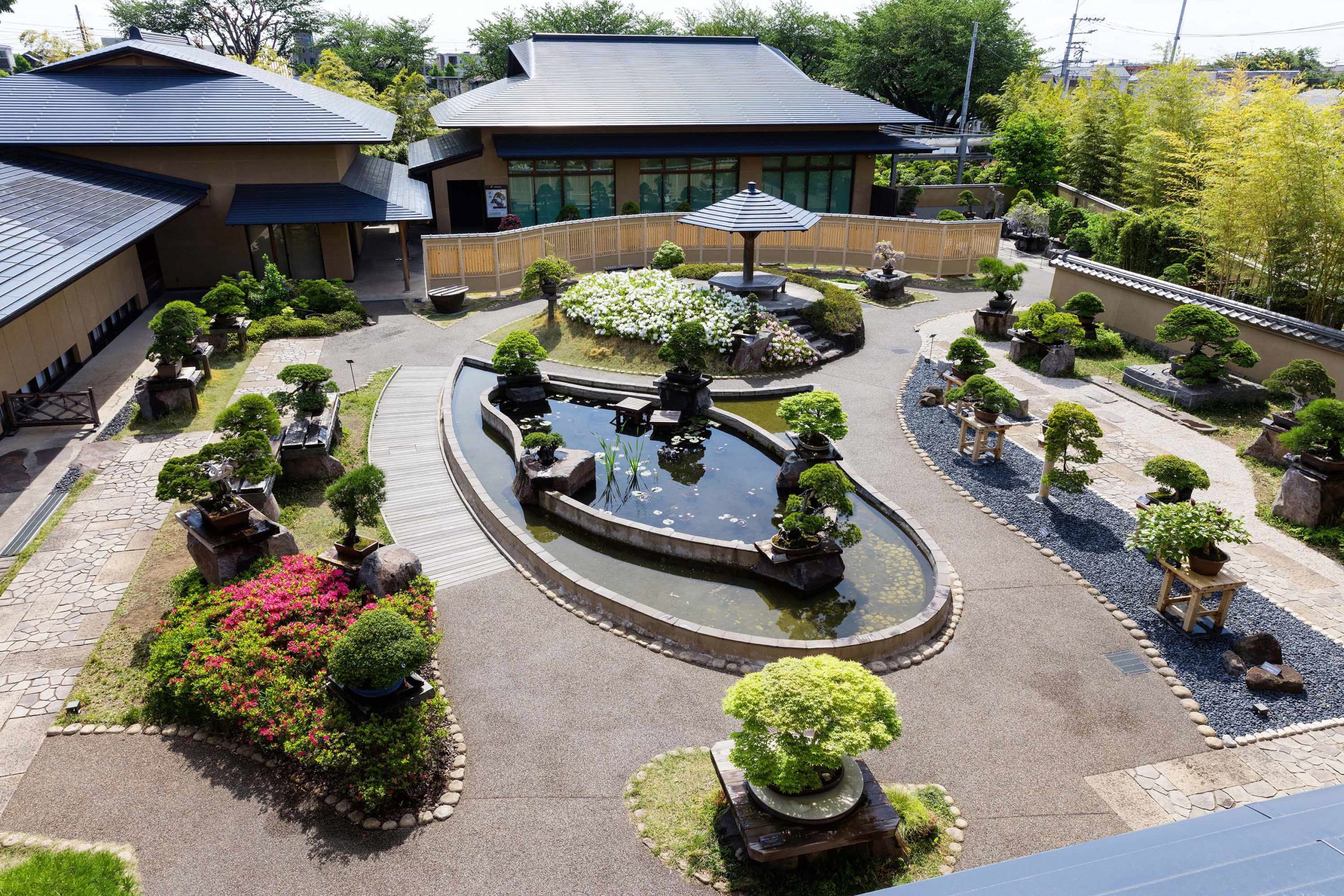
It is a core facility for promoting the culture of bonsai and is the world’s first public museum specializing in bonsai. To spread the culture of bonsai, which is designated a traditional industry of Saitama, along with bonsai, bonki (vase), suiseki (rocks) and paintings of bonsai can also be enjoyed in this diverse exhibit. (For more information regarding the facility, please refer to the URL below.)
This site uses cookies to improve the user experience. If you continue to browse, you consent to the use of cookies on this site. Accept
CONTACT
